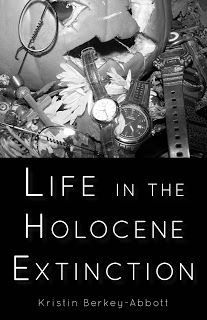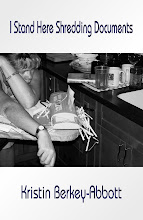A few weeks ago, I heard about Margaret Atwood's new novel, The Year of the Flood, which takes place in the same world as Oryx and Crake. I'm a huge fan of Atwood, so I would have read this novel eventually. But since I just reread Oryx and Crake in the spring, I wanted to read The Year of the Flood sooner, rather than later, while I still remembered the details.
On Friday morning, I listened to Atwood on the Diane Rehm show (go here and scroll down to listen), and she mentioned the great tradition of 19th century novels, where groups of characters circle round and one of the pleasures is figuring out how they will connect. She describes the reading experience as the writer saying, "Meanwhile, back in London . . ." to transition from one group of characters to the next.
I actually started Year of the Flood the week-end before last week-end, and by Friday afternoon, I had gotten to the point in the book where the major characters in Oryx and Crake show up as minor characters in The Year of the Flood. I realized that I didn't remember as much of Oryx and Crake as I thought I did--I couldn't remember what caused the great die-off, for example.
So, on Friday night, I returned to that book. I skimmed through parts, and I actually reread the last chunk of the book. I had added pleasure as I finished The Year of the Flood, keeping the first book in my mind, speculating about how Atwood might intertwine them. I will say no more, since I'd hate to spoil the reading of either book for people.
What I find most interesting about Atwood's speculative fiction is that she claims to use no details that aren't already available in this world. Part of what made The Handmaid's Tale so chilling was knowing that anything she described was already happening to a group of women somewhere. Oryx and Crake and The Year of the Flood are scary because any of these science details are possible, even if we don't see rakunks running around. We know how to make them, should we choose to create a raccoon/skunk blend of a creature.
Margaret Atwood is a treasure of a writer, and I love her as a model of a person who continues to be creative even into older age. Her website for the book shows how much fun she's been having, creating a new religion for the book (complete with hymns and Saints' Days) and a blog (which sounds like it might become collaborative) and different kinds of reading tours and all sorts of interesting stuff.
Speaking of religion in the book, I blogged about this here on my theology blog. And if you want to hear Atwood's address to the Whiting Award winners, go here (thanks to Jeannine, who mentioned it here on her blog).
I can think of no better way to spend the week-end that encompassed Halloween and All Saints' Day than reading this book, which intertwines the themes of Halloween and All Saints' in interesting ways. I was scared to death (but couldn't stop reading) and spiritually nourished. I was reminded of all that we have and how easy it would be to lose it all.
One of Atwood's characters describes the Fall as multidimensional, as a fall "from a joyous life in the moment into the anxious contemplation of the vanished past and the distant future" (187). In some ways, this book increases my anxious contemplation, as all the best utopias/dystopias do. The Year of the Flood is one of the best books I've read this year. But of course, that comes as no surprise to any Atwood fan.
Spend the week-end with Margaret Atwood. You won't be disappointed.
Best Essay Collections of 2017 by Women Authors
6 years ago





No comments:
Post a Comment